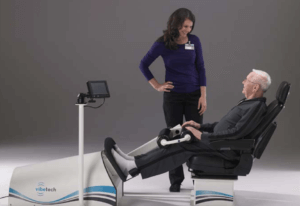VibeTech rehabilitation chair delivers right dose of tension and vibration to patients’ muscles
Problem:
Find an actuator that would provide smooth silent movement while subjected to vibration technology in order to counter muscle atrophy in patients.
Solution:
A low-cost ERD15 electric rod actuator.
Results:
ERD delivered smooth, quiet motion capable of withstanding constant small vibrations and provided a cost-effective solution for machine resale.
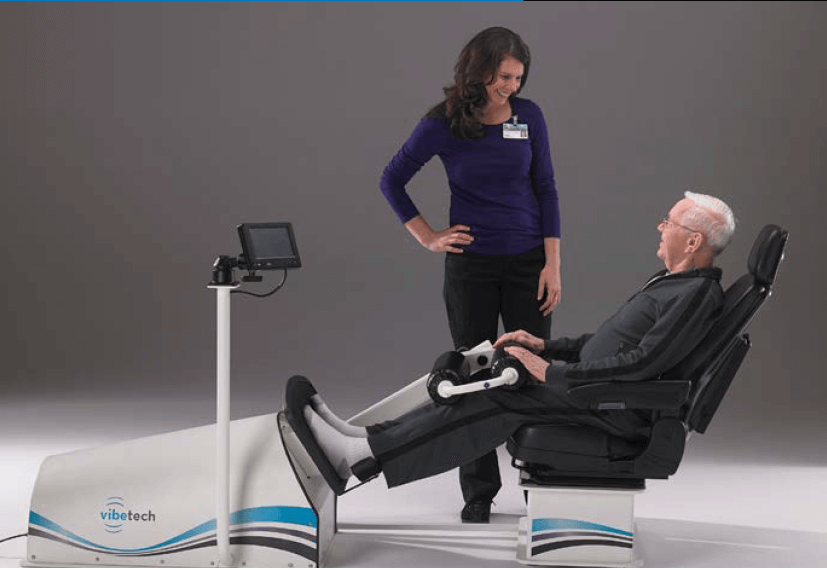
VibeTech rehabilitation chair delivers right dose of tension and vibration to patients’ muscles
VibeTech, Inc., a medical device manufacturer in Sheboygan, Wisc., originally developed a vibration technology to counter muscle atrophy in astronauts who lost strength after long periods of weightlessness. The company found that putting muscles under tension and introducing controlled vibrations helped to restore lost muscle function. Today, VibeTech is putting this technology to use here on Earth to help patients with severely impaired mobility regain their strength and independence. In bringing the VibeTech OneTM rehabilitation chair to market, two large problems had to be solved: finding an actuator that could handle the vibrations and provide both smooth and silent movement.
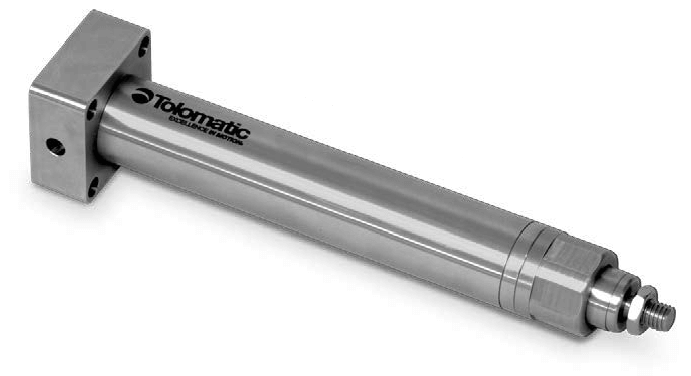
Tolomatic ERD actuator provides high-tolerance, highforce capabilities at a low cost
to innovative medical therapy machine.
The functionality of the chair depends on three components: 1) a footplate that introduces static loading on the patient’s lower limbs by pressing against the patient; 2) a vibratory device connected to the footplate that transmits vibrations up through the patient’s lower limbs and into his or her hips and lower back; and 3) an electric actuator beneath the footplate that controls the amount of static loading on the patient’s lower limbs. This pressure, which ranges from zero to 100 pounds, is precisely controlled by an ERD15 electric actuator from Tolomatic, Inc., Hamel, Minn.
“It’s really the combination of tension and vibration that is helping to rehabilitate the muscles,” said Dr. Nadder Sahar, chief operating officer of VibeTech, Inc. “The vibrations are tuned to the right frequency so that the cells and muscles respond to stimulation. This can be used to treat neuropathy, weakened muscles or help people recovering from surgery or injury who can’t fully engage in physical activities,” he said.
A knee restraint helps keep the patient’s legs in a position that multiplies the vibration and transmission up the legs. If the patient is too weak to resist the loading that is applied, the knee restraint allows someone who is even permanently disabled to be treated.
The design of the footplate mechanism is such that the electric actuator is directly in line with the vibratory device; therefore, it must be able to transmit the vibrations to the footplate and the patient. Any excessive play or backlash in the actuator’s screw would simply absorb the vibrations and prevent them from being transmitted to the footplate. This kind of precision would normally require an expensive custom actuator solution, but the ERD15 electric actuator not only had the precision and force capability required for the application but was also low in cost.
“We needed an actuator that could resist vibration,” said Sahar, “because that’s what this machine does, it vibrates. Because of that vibration, we needed an actuator that didn’t have any backlash in it. That’s because our vibration movements are very small – about 0.5 mm – so if the actuator has excessive backlash, that vibration would not be delivered to the patient,” he said.
“We also needed an actuator that could move smoothly and not create undo noise that could disturb patients. The actuator needed to be of substantial quality, but since we’re manufacturing these machines for resale, we have to be conscious of the price we pay for components. The actuator was made of stainless steel and was available in various pitches with either a ball screw or plastic nut depending on our application. We got all those things and the precision we needed at an off-the-shelf price,” he said.
The ERD electric cylinder family is available in stroke lengths up to 40 inches (1,016 mm), speeds up to 57.5 inches/sec. (1,460.5 mm/sec.), and forces up to 4,500 lbf (20.03 kN), depending on the size and screw choice. The product family is available with ball screws, roller screws and acme screws for a variety of cost, force, speed and life options. The ERD actuator is also compatible with most third-party servo and stepper motors (NEMA and metric), creating a flexible, powerful electric actuator solution.
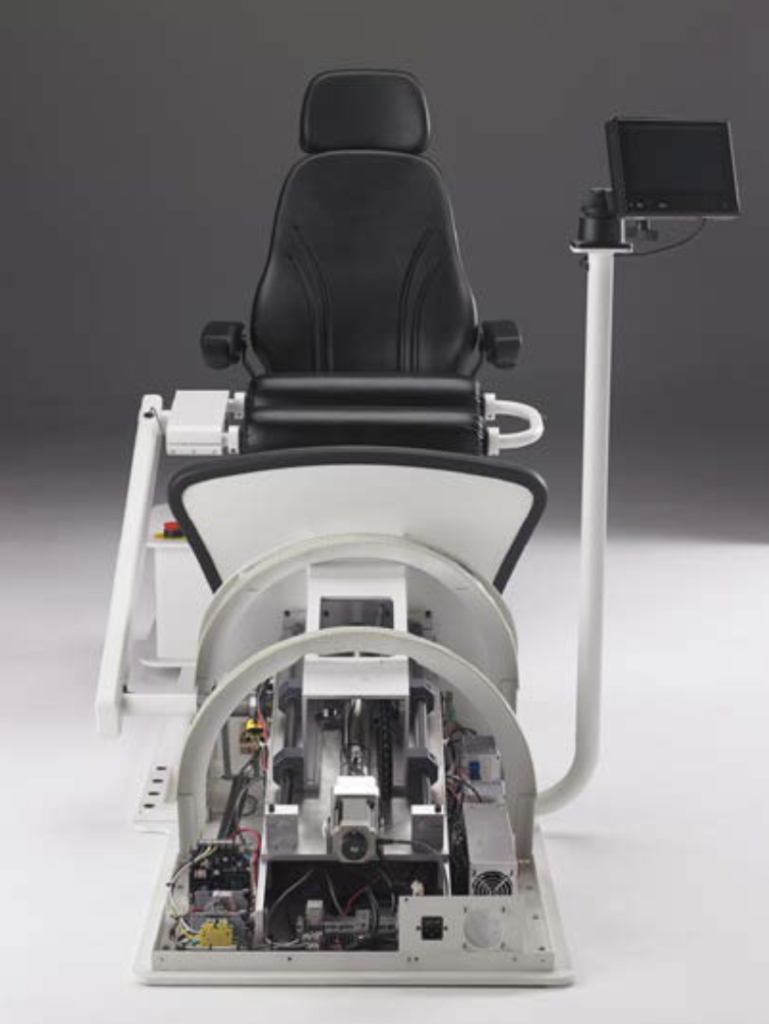
The functionality of the VibeTech OneTM rehabilitation chair depends on a Tolomatic ERD15 electric actuator located beneath the footplate to control the amount of static loading on the patient’s lower limbs.
All six sizes of the ERD actuator are available in 300-series stainless steel and with IP67 or IP69k options, making it the only catalog stainless-steel electric actuator product family of its kind.
“With a stroke length of 12 inches, the ERD15 actuator can accommodate patients of differing size and leg lengths. The force requirements of this application are well within the ERD’s capabilities, and with a standard precision of 0.005 inches, it provided the quality that VibeTech required. The only modification we needed to make to the standard ERD to withstand excessive vibration was to mechanically restrain the magnets used for the position switches.”
In discussing the problem of finding the right actuator, Sahar said, “We didn’t design the chair with the ERD15 in mind, but the ERD solved many of our problems. We knew there were a lot of competing actuators and custom solutions to choose from, but we knew from the start that we would need a precision actuator when we designed the VibeTech One Rehabilitation Chair.”
Offering an array of capabilities at an affordable price, the ERD actuator is integral to the VibeTech Rehabilitation Chair–delivering the right dose of pressure and vibration to help patients recover their mobility.
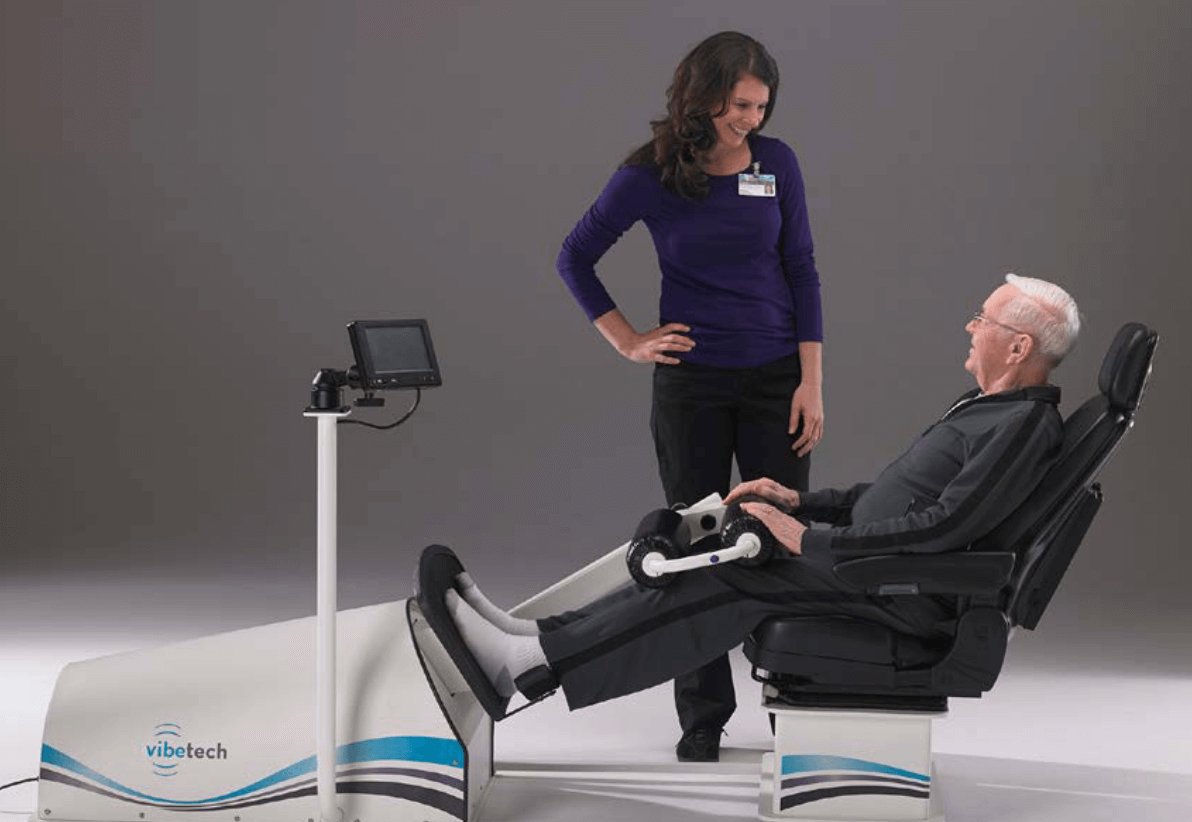
The VibeTech One rehabilitation chair, which helps restore lost muscle function, is designed with
a Tolomatic ERD15 electric actuator to provide the required precision and force.
A pioneer in the medical rehabilitation device industry, VibeTech,Inc. improves people’s health, independence and quality of life through vibration science. The company’s cornerstone product, the VibeTech One™ semi-recumbent vibration therapy system, is the only comprehensive solution to muscle disuse atrophy and functional decline, especially in the most difficult patients to treat—those with mobility impairments.
Beyond the VibeTech One, no other established treatment modality, including electronic stimulation, continuous passive motion, or ultrasound/diathermy, provides the comprehensive solution to satisfy all market needs.

 Ask an Engineer
Ask an Engineer